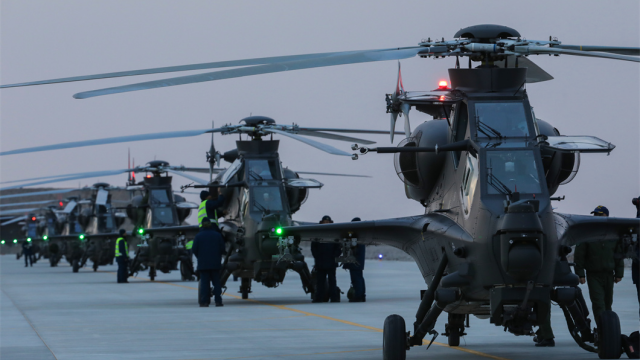When the U.S. decided to kill Iran's top military commander, Major General Qasem Soleimani, it opened a Pandora's box of crucial questions: What's the definition of a terrorist? Who gets to decide? And when do acts committed in the name of preventing terrorism become acts of terrorism in themselves?
To justify the drone attack that killed Soleimani near Iraq's Baghdad International Airport on January 3, U.S. President Donald Trump described him as a "monster" who posed an imminent threat. The Pentagon said Soleimani and his troops were "responsible for the deaths of hundreds of American and coalition service members and the wounding of thousands more."
But in Iran, the story is different. Soleimani was hailed as a hero and "the most effective force fighting Daesh (ISIL)," according to Iran's Foreign Minister Javad Zarif. From Iran's perspective, the U.S. airstrike constitutes an "act of international terrorism," with Iran's information minister calling Trump a "terrorist in a suit."
Although Trump claimed the U.S. killed Soleimani "to stop a war," the reality paints another picture. In response to the U.S. strike, Iran launched more than a dozen missiles at two Iraqi bases that hold U.S. troops in what it called "proportionate measures in self-defense." No Americans were harmed. In his national address at the White House on January 8, Trump said, "Iran appears to be standing down, which is a good thing for all parties concerned and a very good thing for the world." But the very same week, he announced plans to send some 3,000 more troops to the region.
Trump also vowed to strike 52 Iranian sites if Iran takes military action that "strikes any Americans or American assets, including some of cultural importance." He pointed out that 52 represents the number of U.S. hostages Iran took in the country's 1979 revolution.
This escalation didn't just erupt overnight. Tensions have been brewing for a long time and are deeply rooted. But has the international media accounted for these complexities and different sides of the stories? Are they asking the tough questions?
An article published by CNN on January 8 highlights one of these crucial points in its piece, "The evolving U.S. justification for killing Iran's top general." Right of the bat, the article's title hints that there's something rotten in the House of Trump. The article says, "Officials from the Pentagon up to President Donald Trump were careful to make clear the strike was meant to head off an imminent attack on Americans."
A comprehensive timeline of who said what and when at the White House follows, with the Trump administration quickly changing its story. First, the Trump administration says Soleimani posed an "imminent threat." But without evidence, the White House later instead insisted he should have been killed years ago. Then they cited "retaliation" as the reason.
Why would the Trump administration work so hard to brand the strike as a "killing" instead of an "assassination"? Maybe it's because assassination has been illegal under U.S. law since 1981, according to the article, and could require authorization by Congress if the threat Soleimani posed was not imminent.
Both the Iranian president and the Iraqi prime minister are calling Soleimani's death an assassination, along with many media platforms, including Aljazeera and the Guardian. So why, after going through all the trouble of calling out the White House's inconsistency, with all signs suggesting Soleimani did not present an "imminent threat," is CNN still using "killed" instead of "assassinated"? Is there a bias? Is the term misleading?
The situation between Iran and the U.S. is complicated and quickly changing, so we all have to be vigilant about what we read and how we read the news. Otherwise, we might fall into the same trap of being tempted to support a war that never needed to start in the first place.









